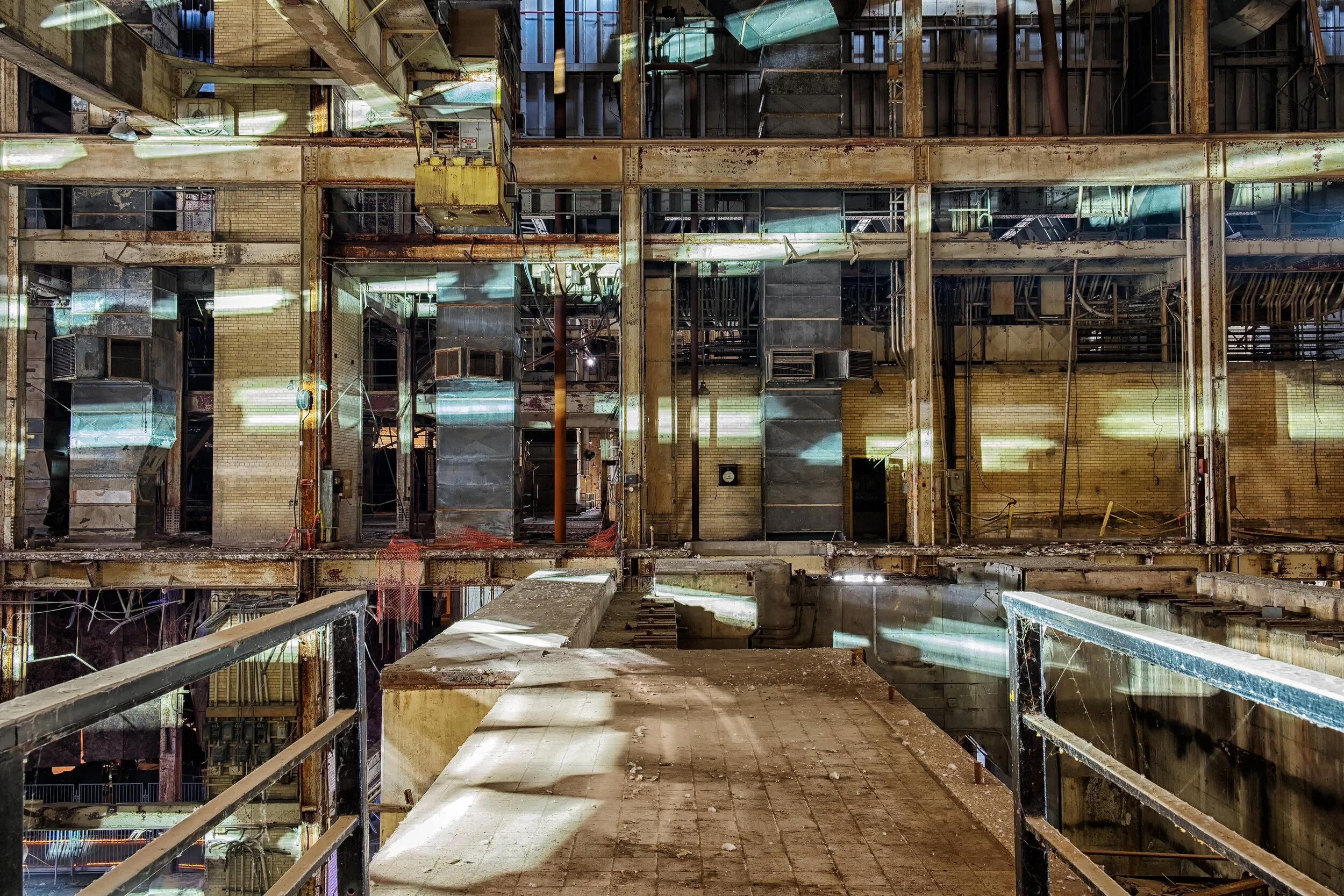Why Are We Selling Off Public Assets?
Over the course of a couple weeks in June 2016, thousands of people streamed through the Hearn, an abandoned electrical generating station in Toronto’s Port Lands area. The occasion was Luminato, an annual arts festival that rehabilitated the massive industrial building to host a wide range of events, including exhibitions, interactive theatre performances, a Canadian citizenship ceremony, and even a rendition of Leonard Cohen’s Hallelujah featuring Rufus Wainwright and a chorus of 1,500 singers. While Luminato animated the space only temporarily, it provided tangible evidence of the creative potential of the site.
In November 2018, however, Ontario Power Generation (OPG) revealed that it had sold the Hearn to Studios of America Limited Partnership, a film company and long-term tenant of the property, for $16 million. While OPG stated that Studios of America was simply exercising its right to purchase the site as outlined in the lease, many are disappointed that yet another valuable piece of public land is being transferred into private hands.
Land is a hot commodity and the sale of public assets is becoming increasingly common. The Toronto District School Board (TDSB) is another institution that has resorted to offloading underutilized properties in a bid to raise money for infrastructure repairs, often to the chagrin of local residents. The TDSB’s decision to put a two-acre field in North Toronto up for sale in 2013, for example, drew criticism from parents in the area whose children benefited from the green space. An article in the Globe and Mail cites a justification from Daryl Sage, CEO of the TDSB subsidiary responsible for surplus property sales, who explains that “the school board needs to maximize its return to raise money for capital projects, so it can’t afford to sell the property at a discount to the city.”
Here lies the crux of the issue. As much as representatives of public institutions might want to maintain properties for community use, they are faced with constant financial pressures that force them to act against those interests.
Is there anything that can be done to counter this trend?
Some have suggested that the properties be rented, rather than sold, to private companies where possible, thereby retaining public ownership for future uses. This will not generate nearly as much revenue, however, particularly because many of the buildings are in a state of disrepair.
Another option is to prioritize uses that, while revenue-generating, make the space available to the public. In London, a decommissioned power station like the Hearn was adapted into the Tate Modern, while retaining much of the building’s original character. In 2017 alone, the gallery received 5.7 million visitors, cementing its place as one of the top attractions in the UK. Artscape Youngplace, housed in the former Shaw Street School, serves as a more local example. The TDSB sold the property to Artscape, rather than a for-profit developer, who transformed it into a community hub featuring affordable workspace for artists and non-profit organizations. One major issue associated with this strategy is that a significant amount of capital is often required to rehabilitate old industrial buildings – as Steve Kupferman reported in the Torontoist, Artscape invested $17.6 million into the Youngplace renovations.
If the land must be sold, then ideally the government or public institution would negotiate benefits for local residents. In the case of the Hearn, perhaps provisions could have been made for Studio of America to offer paid internships for young Torontonians in the film industry for a given number of years. Of course, an ongoing challenge would be to ensure that the benefits are meaningful and long-term, instead of token concessions. While the Hearn is located in Toronto, however, it is owned and managed by the province. As evidenced by the debate around Ontario Place, preserving public property for community use does not appear to be a priority for the Ford government, even with a fair amount of political will to do so at the municipal level. In fact, the Ontario government recently announced that it will be “reducing red tape and accelerating sales of surplus government properties.”
Once property becomes private, there’s no going back. While selling off public assets may alleviate financial constraints in the short-term, we have to explore alternative solutions that align with the long-term goal of an inclusive Toronto.
Header image courtesy of Timothy Neesam.





